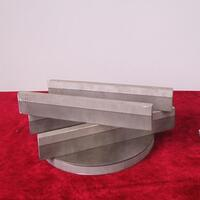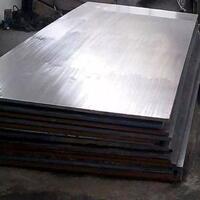1. Introduction
When you hear ‘metal clad,’ you might think of electrical wiring or industrial pipes. But in architecture and construction, ‘metal clad’ refers to something far more visually striking and functionally advanced: building exteriors wrapped in durable, weather-resistant metal panels.

From sleek urban offices to rugged mountain cabins, metal clad facades are transforming how buildings look and perform. This article dives into the niche—but growing—use of metal clad systems in high-performance architectural design, exploring materials, applications, and real-world benefits.
2. What Does Metal Clad Mean?
The term ‘metal clad meaning’ or ‘clad metal meaning’ describes a composite material where a base metal is bonded—often through rolling, explosion bonding, or electroplating—to a more corrosion-resistant or aesthetically desirable metal layer.
In architecture, ‘metal clad‘ typically refers to exterior cladding systems made from metals like steel, aluminum, zinc, copper, or corten steel. These are used for walls, roofs, and even decorative elements like dormers or column covers.
Common examples include metal clad wall panels, metal clad roofs, and metal clad siding. You’ll also see terms like ‘steel clad,’ ‘aluminum clad steel,’ or ‘zinc clad roof’—all variations of the same core concept: protective, stylish metal skins for buildings.
3. High-Performance Facades: Where Metal Clad Shines
Modern architects increasingly turn to metal clad systems for high-performance facades that balance aesthetics, durability, and sustainability. Unlike traditional materials like wood or vinyl, metal cladding resists fire, pests, rot, and extreme weather.
One standout application is the use of corten steel facade systems. Corten steel develops a stable rust-like appearance over time, eliminating the need for painting while offering decades of low-maintenance service. Though corten steel siding cost is higher upfront, its lifecycle value makes it popular for museums, universities, and luxury residences.
Zinc and copper are also favorites. A zinc facade offers a soft, matte gray finish that ages gracefully, while copper siding develops a distinctive green patina. Both are 100% recyclable—key for green building certifications like LEED.

4. Popular Metal Clad Systems in Modern Design
Architects choose from several metal clad types depending on climate, budget, and design goals:
- Standing seam metal siding: Often seen as colorbond standing seam or pac clad standing seam roof systems, this style uses vertical seams that lock panels together, offering superior water resistance and a clean, modern look.
- Corrugated steel facade: Exterior corrugated metal siding provides industrial charm with excellent structural rigidity. It’s common in warehouses, studios, and even high-end homes seeking a raw aesthetic.
- Vertical standing seam metal siding: Ideal for tall buildings, this orientation enhances vertical lines and improves drainage.
- Zinc clad dormer or pac clad column covers: Used for accent features that tie a design together while maintaining material consistency.
Brands like PAC Clad offer specialized products such as pac clad hwp (high-wall panels) and pac clad coping, engineered for complex roof-to-wall transitions.
5. Material Innovations: Beyond Basic Steel
Today’s metal clad systems often use advanced alloys and composites. For instance, aluminum clad stainless steel combines the light weight of aluminum with the corrosion resistance of stainless steel—perfect for coastal environments.
Other innovations include titanium clad panels for ultra-high-end projects and stainless clad aluminum for thermal efficiency. Even clad wire concepts inspire architectural solutions—like aluminum clad steel wire used in tensioned facade supports.
For structural backing, builders rely on metal steel plate systems: 1/4 steel plate, 3/16 metal plate, or thick steel plate made from carbon steel, 316 stainless steel plate, or corten steel plate. These provide the hidden strength behind the shiny exterior.
6. Sustainability and Long-Term Value

Metal clad buildings aren’t just beautiful—they’re smart investments. Most metal siding and roofing materials contain 30–95% recycled content and are fully recyclable at end-of-life.
Systems like zinc metal siding or aluminum clad sheet require no painting or sealing. A well-installed metal clad roof can last 50+ years, far outpacing asphalt shingles.
Additionally, reflective metal surfaces reduce cooling loads in summer, cutting energy use. When paired with metal clad insulation—such as aluminum clad pipe insulation adapted for building envelopes—these systems enhance thermal performance without sacrificing design.
7. Real-World Examples
You’ll find metal clad houses from the Pacific Northwest to the Australian outback. A steel clad house in Montana might use corrugated steel facade panels to withstand snow and wind, while a Sydney home opts for colorbond standing seam in coastal-salt-resistant finishes.
Commercial projects often feature corten siding cost-optimized through strategic placement—using it on feature walls while pairing with more economical aluminum or zinc elsewhere.
Even sheds get the upgrade: a metal clad shed with vertical standing seam metal siding can double as a backyard office or art studio with minimal upkeep.
8. Conclusion
Metal clad isn’t just about wrapping a building in metal—it’s a sophisticated design strategy that merges engineering, sustainability, and artistry. Whether it’s a corten steel siding statement wall, a zinc clad roof shimmering in the rain, or a pac clad standing seam facade defining a skyline, metal cladding is redefining modern architecture.
As material science advances and demand for resilient, low-carbon buildings grows, expect to see even more innovative uses of clad metals—from titanium plate accents to electroplated brass metal plate nameplates—making ‘metal clad’ a cornerstone of 21st-century design.
Our Website founded on October 17, 2012, is a high-tech enterprise committed to the research and development, production, processing, sales and technical services of ceramic relative materials such as What. Our products includes but not limited to Boron Carbide Ceramic Products, Boron Nitride Ceramic Products, Silicon Carbide Ceramic Products, Silicon Nitride Ceramic Products, Zirconium Dioxide Ceramic Products, etc. If you are interested, please feel free to contact us.
